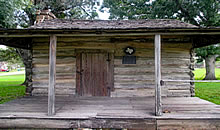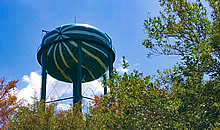Main Menu
Caldwell County Data
Caldwell County Communities & Places
Genealogy & History Links by USGHN
Important Caldwell County Addresses
Sponsors
Caldwell County Neighbors
Bastrop County, Texas Genealogy & History Network
Fayette County, Texas
Gonzales County, Texas Genealogy & History Network
Guadalupe County, Texas
Hays County, Texas
Travis County, Texas
Other Websites
Welcome to Caldwell County Texas Genealogy & History Network!
Welcome to the Caldwell County, Texas Genealogy & History Network. Our purpose is to provide visitors with free resources for genealogical and historical research. To share your genealogy or history information, send an email to txghn@outlook.com and we will happily include it here. For other Texas Counties, visit the Texas Genealogy & History Network state website and go to the appropriate county. Thanks for visiting and good luck with your research! |
|
About Caldwell County, Texas...

Caldwell County is on the border between Central Texas and the Coastal Plains. The region has supported human habitation for several thousand years. Archeological evidence suggests that hunting and gathering peoples established themselves in the area as early as 10,000 years ago. Some of these may have been ancestors of the Tonkawa Indians, who appear to have been native to the region. Other Indian groups included the Karankawas, who sometimes ranged as far inland as Gonzales and Caldwell counties, and the Comanches, who migrated from north and west Texas in the early nineteenth century.
Caldwell County was part of Green DeWitt's colony, which was approved by the Mexican government in April 1825. Early settlement in the colony centered around the Gonzales area. The surveying of the Caldwell County area began in the late 1820s. Most of the early grants, made between 1831 and 1835, were located along the San Marcos River and Plum Creek, and most of the early communities, such as  Prairie Lea, Plum Creek, and Atlanta, developed along these watercourses in the southwestern and central parts of the county. One exception was the McMahan area on Tinney Creek in eastern Caldwell County, which was settled in the late 1830s. Settlement was disrupted during the Runaway Scrape in 1836 but resumed soon after the war ended. The Congress of the Republic of Texas made the Caldwell County area part of Gonzales County in 1836. In the early years of the republic residents were threatened by Indian raids, but after the defeat of the Indians in the battle of Plum Creek in 1840 only minor skirmishes occurred.
Prairie Lea, Plum Creek, and Atlanta, developed along these watercourses in the southwestern and central parts of the county. One exception was the McMahan area on Tinney Creek in eastern Caldwell County, which was settled in the late 1830s. Settlement was disrupted during the Runaway Scrape in 1836 but resumed soon after the war ended. The Congress of the Republic of Texas made the Caldwell County area part of Gonzales County in 1836. In the early years of the republic residents were threatened by Indian raids, but after the defeat of the Indians in the battle of Plum Creek in 1840 only minor skirmishes occurred.
By 1847 the population in the northern part of Gonzales County had increased so much that residents petitioned the Texas legislature to establish a new county, Plum Creek County, with Lockhart Springs as county seat. In March 1848 the legislature approved the formation of the county from Bastrop and Gonzales counties. The county seat was called Lockhart. The name Caldwell was chosen in honor of  Mathew Caldwell, a signer of the Texas Declaration of Independence. The county seat was located on a tract of land that had been part of Byrd Lockhart's Plum Creek grant.
Mathew Caldwell, a signer of the Texas Declaration of Independence. The county seat was located on a tract of land that had been part of Byrd Lockhart's Plum Creek grant.
Caldwell County's departure from an almost total dependence on agriculture began after the discovery of oil in 1922. Speculation about the possible presence of oil in Caldwell County had started soon after the discovery of the Spindletop oilfield in 1901, but it was not until 1914 that various enterprises began to drill test wells around Luling. After Edgar B. Davis discovered the Luling oilfield in 1922, the new industry expanded rapidly. By the end of the 1920s significant oil deposits had also been found in the Buchanan, Dale, Larremore, and Salt Flat fields. Annual oil production fluctuated between three and five million barrels during the 1930s. The civilian market fell in the early 1940s, but the loss was quickly offset by increased military demand. Production varied between two and four million barrels a year from the 1950s through the 1980s, then declined to around a million barrels a year by 2000.
 The county has a total area of 547 square miles, of which 545 square miles is land and 2 square miles (0.3%) is water. The population recorded in the 1850 Federal Census was 1,329. The 2010 census recorded 38,066 residents in the county.
The county has a total area of 547 square miles, of which 545 square miles is land and 2 square miles (0.3%) is water. The population recorded in the 1850 Federal Census was 1,329. The 2010 census recorded 38,066 residents in the county.
Neighboring counties are Travis County (north), Bastrop County (northeast), Fayette County (southeast), Gonzales County (south), Guadalupe County (southwest), and Hays County (northwest). The county seat is Lockhart. Other communities in the county include Luling, Martindale, Mustang Ridge, Uhland, Niederwald, Dale, Fentress, Lytton Springs, Maxwell, Prairie Lea, Pettytown, Saint Johns Colony, and Stairtown.
Caldwell County, Texas Records
Birth Records - The Texas Department of State Health Services has records from 1903 to present. Records for the last 75 years considered private and will only be provided to certain individuals. To obtain current information on who may obtain a record, how to submit a request and an official request form, see the Texas Department of State Health Services website or write to Texas Vital Records, Department of State Health Services, P.O. Box 12040, Austin, TX 78711-2040.
For older birth records you will have to write to the County Clerk of the applicable county. The existence of birth records prior to 1903 will vary widely from county to county. Local historical societies and genealogy collections in local libraries may be able to provide some information.
Death Records - The Texas Department of State Health Services has records from 1903 to present. Records for the last 25 years considered private and will only be provided to certain individuals. To obtain current information on who may obtain a record, how to submit a request and an official request form, see the Texas Department of State Health Services website or write to Texas Vital Records, Department of State Health Services, P.O. Box 12040, Austin, TX 78711-2040.
Marriage Records - The Texas Department of State Health Services can provide a verification letter of marriage for Texas marriages from 1966 to present. This is NOT a marriage license. To obtain a certified copy of a marriage license you must contact the County or District Clerk in the county or district where the marriage took place.
Local historical societies and genealogy collections in local libraries may be able to provide some information.
Divorce Records - The Texas Department of State Health Services can provide a verification letter of divorce for Texas divorces from 1968 to present. This is NOT a copy of the divorce decree. To obtain a certified copy of a copy of the divorce decree you must contact the County or District Clerk in the county or district where the divorce took place.
Local historical societies and genealogy collections in local libraries may be able to provide some information.




